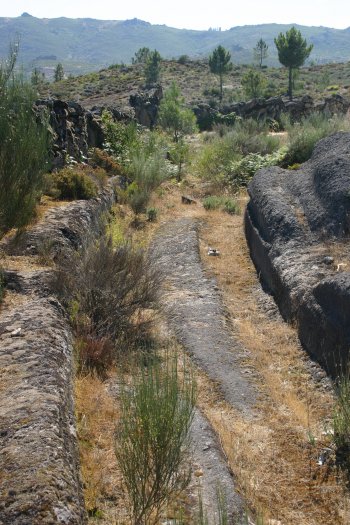Explore the best places
Results for Palácio da Pena in Portugal
Castelo de Montemor-o-Velho
- heritage
Rua Infante Dom Pedro
3140-262, Montemor-o-Velho
The castle is the largest medieval fortress on the Mondego line and one of the largest in the country. Its current appearance is due to a complete renovation carried out in 1331. At this time, a Palace was built for the princesses, a building that was successively transformed until the Manueline period, the date of the last known renovation. The Keep Tower also dates from this campaign by King Afonso IV, topped by pentagonal battlements, with the upper floor surrounded by boulders and elongated corbels. Inside, the Church of Santa Maria da Alcáçova is preserved, a Gothic temple from the …
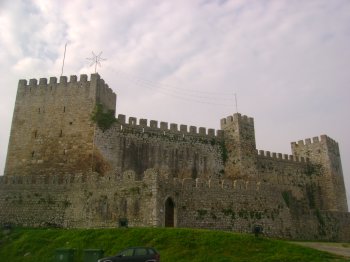
Igreja Paroquial de Nossa Senhora das Neves
- heritage
Rua de Cima
9500-661, Ponta Delgada
The parochial church of Nossa Senhora das Neves will have been built between the end of the third and start of the last quarter of the 15th century (1472-1480), the meter Martim Vaz. Your plant is rectangular divided in three naves consist of high pillars, elemental calligraphic organization space, classical formulation model of Mannerist tradition recovered in the second half of the 16th century. The interior is beautiful and austere, note the Baroque from the first half of the 18th century in the high pillars of the ships and fine examples of the carvings of the altars of the chancel, …
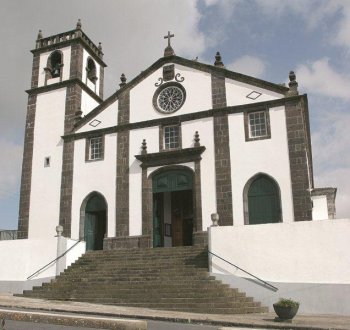
Igreja Paroquial de Curros
- heritage
Curros
5460-400, Curros
The parish church of Curros, dedicated to our Lady of the snows, is deployed south of the village of Curros, away from housing cluster, flanked by a forecourt enclosed by a granite wall, where you will find the cemetery. Is a granite building of rectangular plant oriented Northeast\/Southwest. The main façade, with a porch, has a round arch portal, ends in Gable, with cornice, crowned by a Latin cross about acroterion. Inside this church, the floor is paved with granite slabs, old graves, some of which numbered or registered brands. Has three gilded altars: the main altar, decorated with painted …

Cruel
- food & drink
Rua da Picaria, 86-A
4050-477, Porto
Num espaço contemporâneo e muito urbano, em que a sobriedade convive com apontamentos vintage, serve-se uma experiência baseada na expectativa e na surpresa para uma refeição em que o primeiro ensejo é o de despertar a curiosidade, funcionando como ótima introdução aos novos sabores que chegam à mesa a partir da cozinha à vista. Uma carta capaz de provocar diferentes sensações divide-se em pratos mais baseados na cozinha portuguesa, familiares ao palato, outros, para os cautelosos, mais orientados para provocar surpresas a partir de receitas conhecidas e o terceiro nível – o cruel – em que nada é o que …

Casa de Cancelo
- food & drink
Rua de Cancela, 444
4820-020, Fafe
O restaurante Casa de Cancelo, em Fafe, está integrado no complexo turístico Rilhadas. Esta casa de traça tipicamente minhota, recuperada e transformada, foi transformada num espaço multi-funcional, com valência de restaurante, bar e club house. O ambiente íntimo e acolhedor alia a origem rústica com a elegância do seu interior. Vitela assada à moda de Fafe ou com arroz de bucho, o cabrito assado em forno a lenha, o arroz pica-no-chão (cabidela), bem como os bolos com sardinhas ou com rojões são algumas das opções que fazem parte de uma carta que evidencia os sabores regionais. Os jantares são servidos …

Cervejaria Lebrinha
- food & drink
Rua do Calvário, 6-8
7830-347, Serpa
O restaurante Cervejaria Lebrinha é um nome incontornável em Serpa, devido à imperial que “nunca morre”. Da cozinha saem típicos comeres alentejanos, seja como petiscos ou pratos mais completos. Orelha de porco em coentrada, espargos com ovos, enchidos e queijos são apenas alguns dos exemplos de uma longa lista de entradas. As migas com entrecosto e o ensopado de borrego à pastora são especialidades a não perder. No mesmo caminho segue o bacalhau à casa, sem que isso impeça de escolher outros pratos como o entrecosto de porco preto com amêijoas ou as favas com chouriço. Tarte de requeijão e …
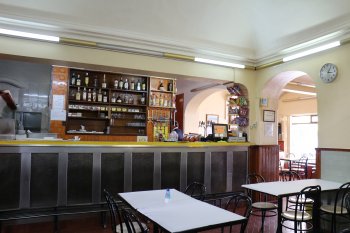
O Sapo
- food & drink
Rua da Estrada, 25
4560-173, Irivo
O restaurante O Sapo, localizado na aldeia de Irivo, é um espaço rústico e familiar, onde o receituário de cozinha tradicional duriense é transmitido de geração em geração. O sucesso é comprovado pelo sabor caseiro e a qualidade dos petiscos que se mantêm os mesmos desde há 30 anos. Quer nas entradas, onde encontra deliciosos bolinhos de bacalhau e pataniscas, quer nos pratos principais, como o bacalhau da casa, as tripas à moda do Porto, o cozido à portuguesa e o famoso anho no forno, a tradição é servida em doses generosas. As sobremesas, para quem conseguir, são também uma …
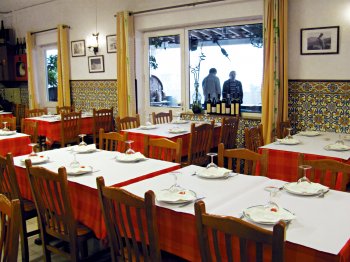
Santuário Mariano de Nossa Senhora do Bom Despacho
- heritage
Rua Padre José Pinheiro Duarte, 39
4470-151, Maia
Igreja construída em 1738, em estilo barroco, de planta longitudinal, nave única e capela-mor retangular. O interior é decorado com talha dourada, retábulos e caixotões barrocos, possui uma cruz de Malta e um vitral em honra de Nossa Senhora do Bom Despacho. Merece destaque o revestimento da fachada principal, todo em azulejo. Em 2003, foi declarado Santuário Mariano por decreto do Bispo do Porto, D. Armindo Lopes Coelho, altura em que a Nossa Senhora do Bom Despacho foi coroada como Padroeira de todo o concelho. A festa em sua honra celebra-se no segundo domingo de Julho, feriado municipal.

Sé do Porto
- heritage
Terreiro da Sé
4050-603, Porto
The Sé is the main church in the city of Porto. It was built in the twelfth and thirteenth centuries. The first mass was held in the year 1120. In the 13th century alterations were made that completely altered the main portal. Rebuilt in the Baroque style, it kept only the rose window of its original construction. Nicolau Nasoni was the author of a galilee on the north façade, and also intervened in the decoration of the sacristy. The interior retains the images of Nossa Senhora da Vandoma (14th century), the "silver altar", an important Gothic cloister, the "old cloister", …
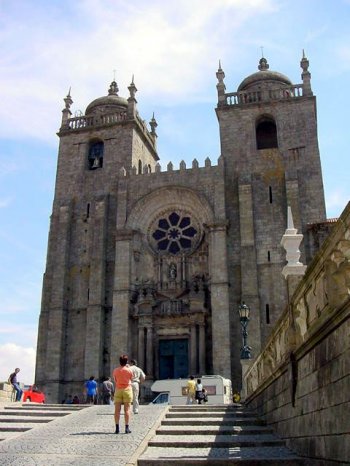
Via Romana XVII do Itinerário de Antonino
- heritage
Arcos
5470-051, Montalegre
Via built during the Julio Claudian, considered one of the most important sections and with more loot Via XVII of the Antonine itinerary. Starting from Gralhós, this route follows the path of Avessó, Ribeira do Cargual, Porto da Geia and Suavila, to enter the village of bark, in the parish of deer. It is believed that on this site via could have two strokes; the first beneath the village, plus the right, between a vampire, now flanked by walls, which possibly in winter would be soaked and another stroke at the top of the village. These two routes are then …
